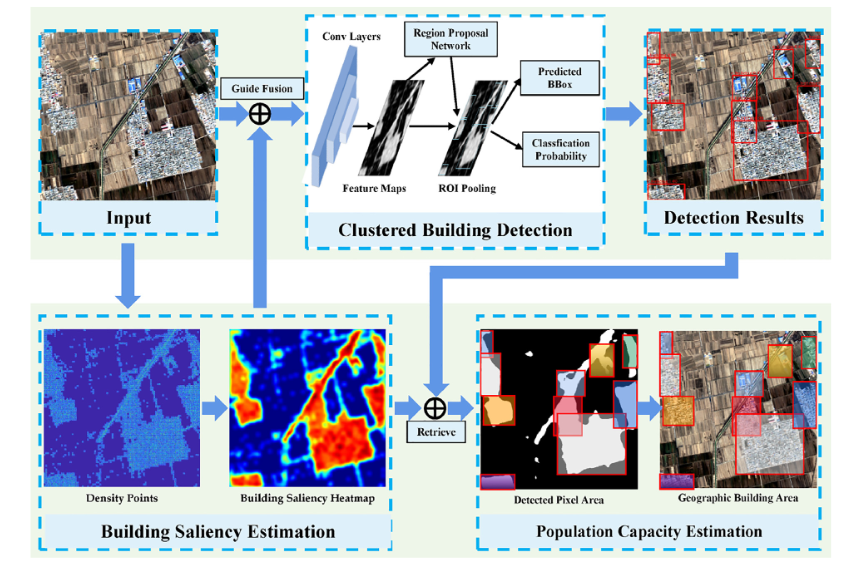Recently, a research team led by Prof. Dr. Xuelong Li from Xi'an Institute of Optics and Precision Mechanics (XIOPM) of the Chinese Academy of Sciences (CAS) has successfully realized clustered building detection and population capacity estimation which, by and large, solved the long- standing difficulties of cluster building detection in remote sensing area. Their up-to-date results were published in Neurocomputing.
Conventional building detection works such as hand-designed feature based methods and Deep Neural Network (DNN) based methods usually focus on constructions which have clear appearance structure.
However, the reality is not so ideal. For some low space resolution images, the buildings are very small in terms of pixels, making them hard to be distinguished from the surrounding backgrounds. Consequently, the traditional methods are not so effective in practical applications. This kind of missions is defined by researchers as Clustered Building Detection (CBD).
Through observation the research team above found that distributions of clustered buildings are mostly dense cellular, while the backgrounds not, which is a vital law for distinguishing artificial constructions from backgrounds.
Based on this, the research team proposed a density saliency algorithm to mine the information of dense and cellular structure for the CBD. Under this algorithm, density saliency with low probabilities would be judged as background, which can mine the prior information for the clustered buildings more efficiently by reducing the computation time in detection stage.
Further, combining the CBD with the density saliency map the research team presented a new method called Population Capacity Estimation (PCE) method, which can be used for the population of accommodation estimate.
This new achievement can be widely implemented in some significant fields such as national land resource management, disaster survey, shantytown modification, etc.
This work is supported by the Key Research Program of Frontier Sciences, Chinese Academy of Sciences, and by the National Natural Science Foundation of China.
 Flowchart of the proposed methodology (Photo by XIOPM)
Flowchart of the proposed methodology (Photo by XIOPM)


